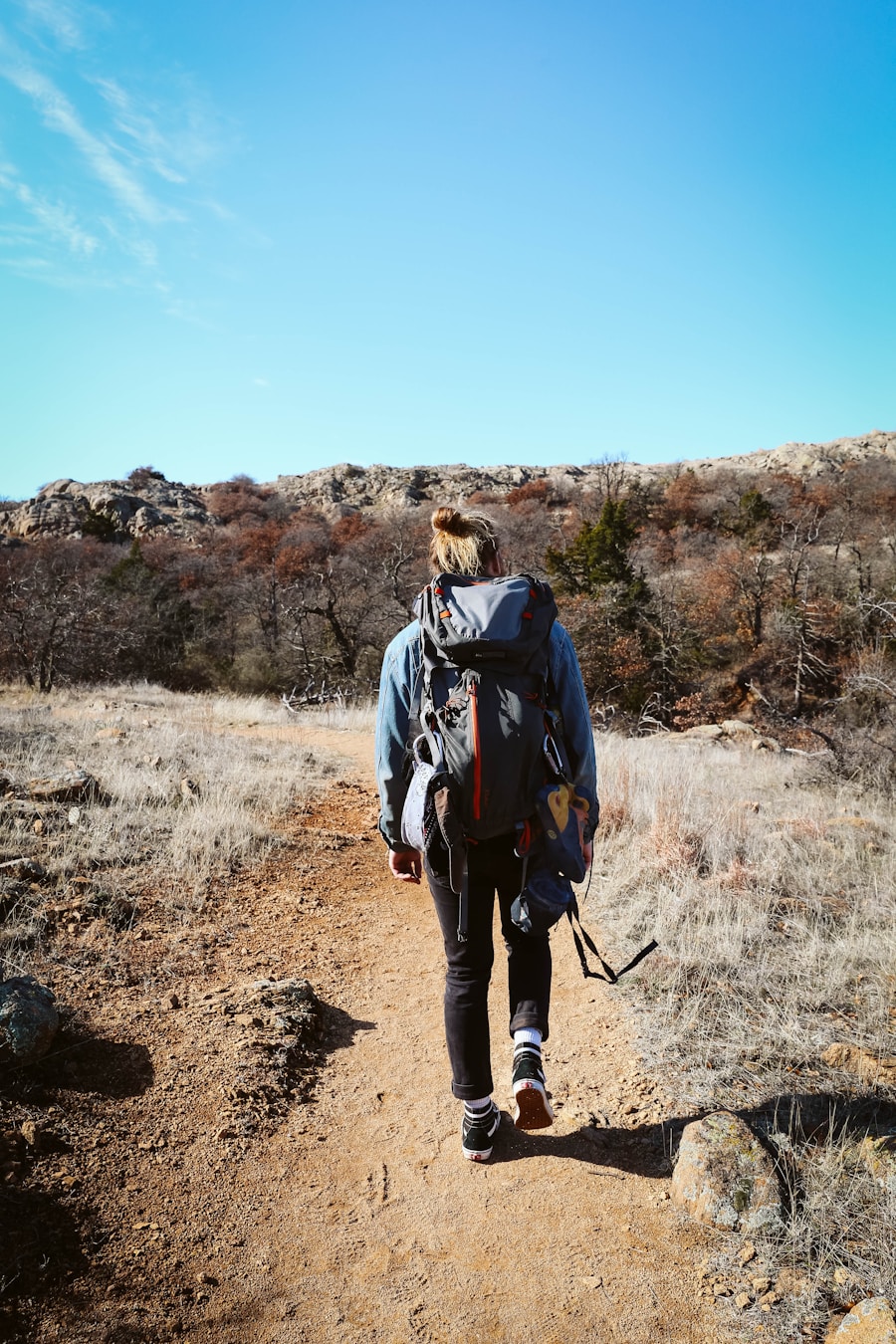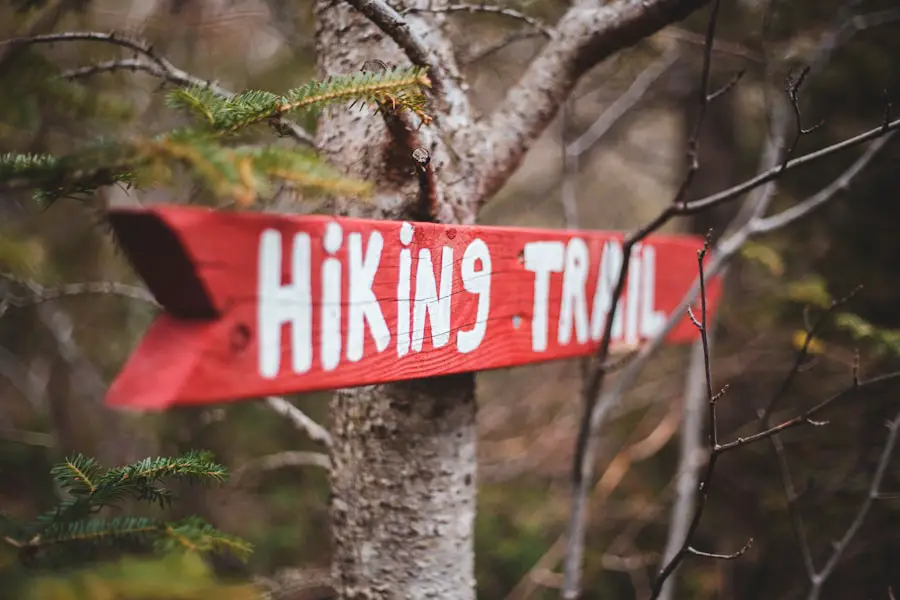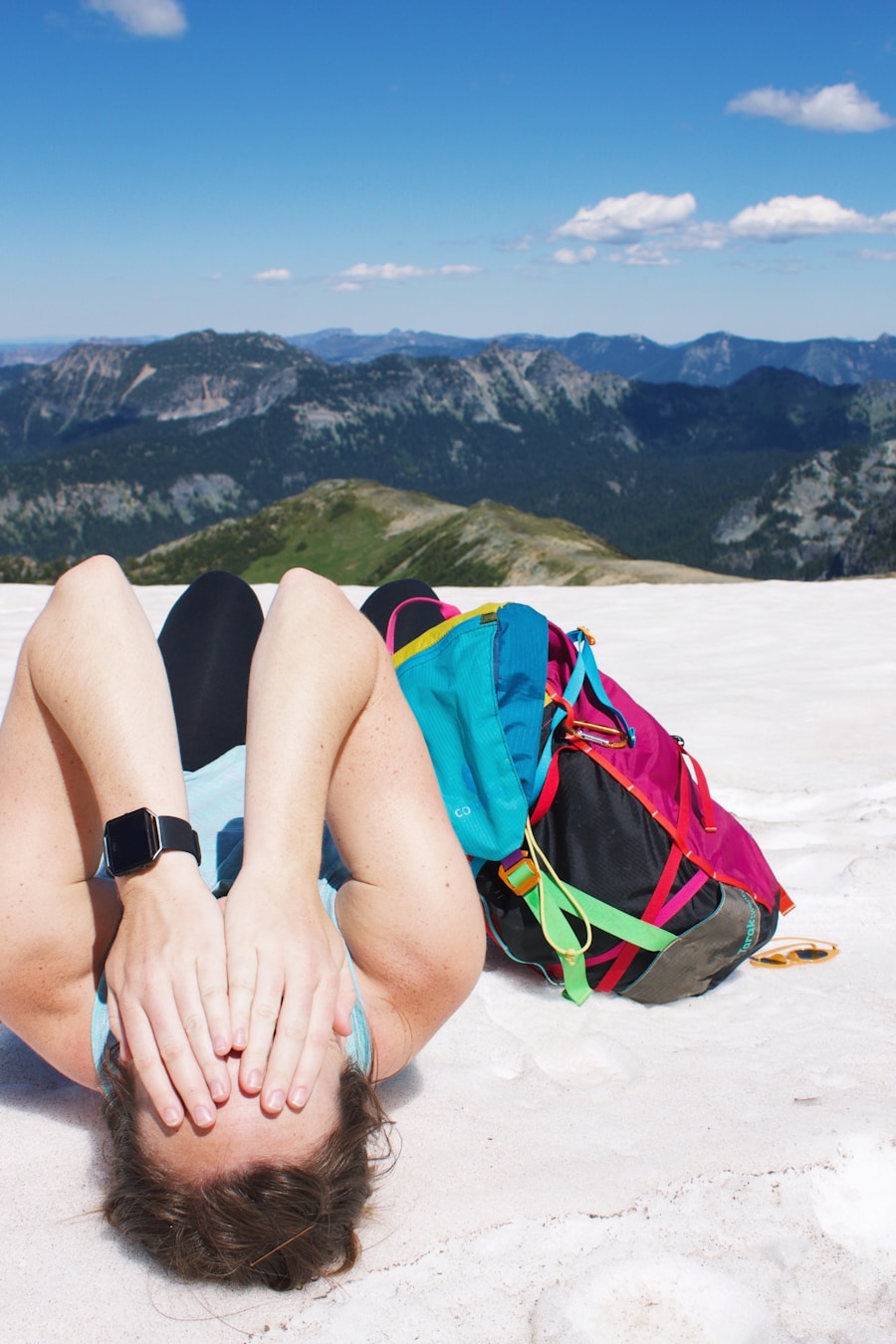Selecting the appropriate footwear is one of the most critical decisions a hiker can make. The type of terrain you will encounter significantly influences the kind of shoes or boots you should wear. For instance, if your hike involves rocky paths or uneven surfaces, a sturdy pair of hiking boots with excellent ankle support and a rugged sole is essential.
These boots are designed to provide stability and protect your feet from sharp rocks and other potential hazards. Brands like Merrell and Salomon offer models specifically engineered for challenging terrains, featuring advanced grip technology that enhances traction on slippery surfaces. Conversely, if your hike is on well-maintained trails or involves a lot of flat, easy walking, lightweight hiking shoes or trail runners may be more suitable.
These options are generally more breathable and flexible, allowing for greater comfort over long distances. They are particularly advantageous in warmer weather when overheating can be a concern. However, it’s crucial to ensure that whatever footwear you choose fits well and is broken in before embarking on a long hike.
Blisters and discomfort can quickly turn an enjoyable outing into a painful ordeal, so investing time in finding the right fit is paramount.
Key Takeaways
- Choose footwear appropriate for the terrain to prevent discomfort and injury
- Pack essentials such as water, snacks, first aid kit, and navigation tools for a successful hike
- Familiarize yourself with trail markers and maps to avoid getting lost
- Follow trail etiquette and safety practices to ensure a positive hiking experience
- Build endurance and stamina through regular exercise and gradually increasing hike difficulty
- Master uphill and downhill techniques to navigate different terrains safely
- Embrace the outdoors by staying present, taking in the scenery, and disconnecting from technology
- Practice Leave No Trace principles to minimize environmental impact and preserve the natural beauty of the trails
Packing the Essentials: Tips for a Successful Hike
When preparing for a hike, packing the right essentials can make all the difference between a successful adventure and a frustrating experience. Start with the basics: water and snacks. Hydration is vital, especially during strenuous activities, so carrying enough water is non-negotiable.
A general rule of thumb is to drink about half a liter of water for every hour of moderate activity. Additionally, high-energy snacks such as trail mix, energy bars, or jerky can help maintain your energy levels throughout the hike. Beyond hydration and nutrition, consider packing a first-aid kit tailored to your needs.
This kit should include items like adhesive bandages, antiseptic wipes, pain relievers, and any personal medications you may require. Furthermore, a multi-tool or knife can be invaluable for various situations, from preparing food to making minor repairs on gear. Don’t forget to include navigation tools such as a map and compass or a GPS device, as well as a flashlight or headlamp in case your hike extends into the evening hours.
Proper planning and packing can significantly enhance your hiking experience by ensuring you are prepared for unexpected challenges.
Navigating Trail Markers and Maps

Understanding how to navigate using trail markers and maps is an essential skill for any hiker. Trail markers are typically placed at regular intervals along hiking paths to guide hikers and indicate which direction to go. These markers can take various forms, including painted blazes on trees, signs at intersections, or even rock cairns in more remote areas.
Familiarizing yourself with the specific markers used in your hiking area can help prevent disorientation and keep you on track. In addition to trail markers, having a good map of the area is crucial. Topographic maps provide detailed information about the terrain, including elevation changes, water sources, and potential hazards.
Learning how to read these maps effectively can enhance your hiking experience by allowing you to plan your route according to your skill level and physical condition. It’s also wise to carry a backup navigation method, such as a GPS device or smartphone app, but always remember that technology can fail. Therefore, having traditional navigation skills is invaluable in ensuring you can find your way even when electronic devices are not an option.
Understanding Trail Etiquette and Safety Practices
| Trail Etiquette and Safety Practices | Statistics |
|---|---|
| Number of trail accidents reported annually | 1,000 |
| Percentage of accidents caused by not yielding to other trail users | 35% |
| Percentage of accidents caused by not following trail signs and markers | 20% |
| Number of trail users injured due to not wearing proper safety gear | 500 |
| Percentage of trail users who do not carry enough water and snacks | 40% |
Trail etiquette is an essential aspect of hiking that promotes respect among hikers and helps preserve the natural environment. One fundamental rule is to yield the right of way appropriately; generally, hikers traveling uphill have the right of way over those coming downhill. This practice not only ensures safety but also minimizes disruption to the flow of traffic on busy trails.
Additionally, when encountering horseback riders, hikers should step aside and allow them ample space to pass safely. Safety practices are equally important while hiking. Always inform someone about your hiking plans before heading out, including your expected return time.
This precaution ensures that someone will know to look for you if you do not return as planned. Carrying a whistle can also be beneficial; it serves as an effective signaling device in case of emergencies. Moreover, understanding weather conditions is crucial; checking forecasts before your hike can help you prepare for sudden changes in weather that could impact your safety.
Building Endurance and Stamina for Longer Hikes
Building endurance and stamina is vital for those who wish to tackle longer hikes or more challenging trails. One effective way to enhance your physical fitness is through regular cardiovascular exercise. Activities such as running, cycling, or swimming can significantly improve your aerobic capacity, making it easier to handle extended periods of exertion on the trail.
Incorporating interval training into your routine can also be beneficial; alternating between high-intensity bursts and lower-intensity recovery periods can help build both strength and endurance. In addition to cardiovascular training, strength training should not be overlooked. Focusing on core strength and leg muscles will provide the necessary support for carrying a backpack over long distances.
Exercises like squats, lunges, and planks can help build the muscle groups most engaged during hiking. Furthermore, gradually increasing the distance and difficulty of your hikes will allow your body to adapt over time, making longer treks feel more manageable as you build both physical and mental resilience.
Mastering Uphill and Downhill Techniques

Navigating uphill and downhill sections of trails requires different techniques that can significantly affect your efficiency and safety while hiking. When ascending steep inclines, it’s essential to maintain a steady pace rather than rushing up the slope. Shortening your stride can help conserve energy while keeping your balance steady.
Engaging your core muscles while using trekking poles can also provide additional support and stability during climbs. Descending can be equally challenging; improper technique can lead to slips or falls that may result in injury. When going downhill, it’s advisable to lean slightly back while keeping your knees slightly bent to absorb impact better.
Taking smaller steps allows for greater control over your descent, reducing strain on your knees and joints. If the trail is particularly steep or slippery, using trekking poles can provide extra stability and help distribute weight more evenly across your body.
Embracing the Outdoors: Tips for Enjoying the Hiking Experience
To truly embrace the outdoors during your hiking experience, it’s essential to cultivate a mindset that appreciates nature’s beauty and tranquility. One way to enhance this appreciation is by practicing mindfulness while on the trail. Take moments to pause and observe your surroundings—listen to the sounds of birds chirping or water flowing nearby, feel the texture of tree bark under your fingers, or breathe in the fresh air filled with earthy scents.
Engaging all your senses can deepen your connection with nature and make each hike more fulfilling. Additionally, consider exploring different trails that offer varying landscapes and ecosystems. Each hike presents an opportunity to discover new flora and fauna; researching local wildlife before heading out can enrich your experience by allowing you to identify species along the way.
Joining local hiking groups or clubs can also enhance enjoyment by providing camaraderie with fellow outdoor enthusiasts who share similar interests in exploring nature’s wonders.
Practicing Leave No Trace Principles for Responsible Hiking
Practicing Leave No Trace principles is crucial for preserving natural environments while enjoying outdoor activities like hiking. These principles encourage hikers to minimize their impact on the environment by following specific guidelines designed to protect ecosystems and wildlife habitats. One fundamental principle is to stay on designated trails; this helps prevent soil erosion and protects sensitive vegetation from being trampled.
Another key aspect of Leave No Trace is proper waste disposal. Hikers should always pack out what they pack in—this includes food wrappers, toilet paper, and any other trash generated during their outing. In areas without restroom facilities, it’s essential to follow guidelines for human waste disposal by burying waste at least six inches deep and at least 200 feet away from water sources.
By adhering to these principles, hikers contribute to maintaining the beauty of natural spaces for future generations while enjoying their own outdoor adventures responsibly.
If you’re looking to improve your hiking skills, you may also be interested in learning about the 5 must-have packing cubes for your spring 2025 getaway. These packing cubes can help you stay organized and efficient while on the trail, allowing you to focus on enjoying the great outdoors. Check out the article here for more information on how to enhance your hiking experience.
FAQs
What are some tips for getting better at hiking?
Some tips for getting better at hiking include gradually increasing the distance and difficulty of your hikes, practicing good hiking techniques, and building strength and endurance through regular exercise.
How can I improve my hiking endurance?
To improve hiking endurance, you can engage in regular cardiovascular exercise such as walking, running, or cycling. Additionally, incorporating strength training exercises for the legs and core can help improve overall endurance.
What gear is essential for improving hiking performance?
Essential gear for improving hiking performance includes proper hiking boots, moisture-wicking clothing, a well-fitted backpack, trekking poles, and a hydration system. It’s also important to carry navigation tools, first aid supplies, and emergency essentials.
What are some common mistakes to avoid when trying to get better at hiking?
Common mistakes to avoid when trying to get better at hiking include overestimating your abilities, not properly preparing for the hike, not staying hydrated, and not pacing yourself. It’s also important to be mindful of the environment and leave no trace while hiking.
How can I train for hiking at higher altitudes?
To train for hiking at higher altitudes, you can gradually increase your elevation gain during hikes, incorporate interval training to improve cardiovascular endurance, and consider using altitude training masks or simulating high-altitude conditions in a controlled environment. It’s also important to acclimate properly when hiking at higher altitudes.
